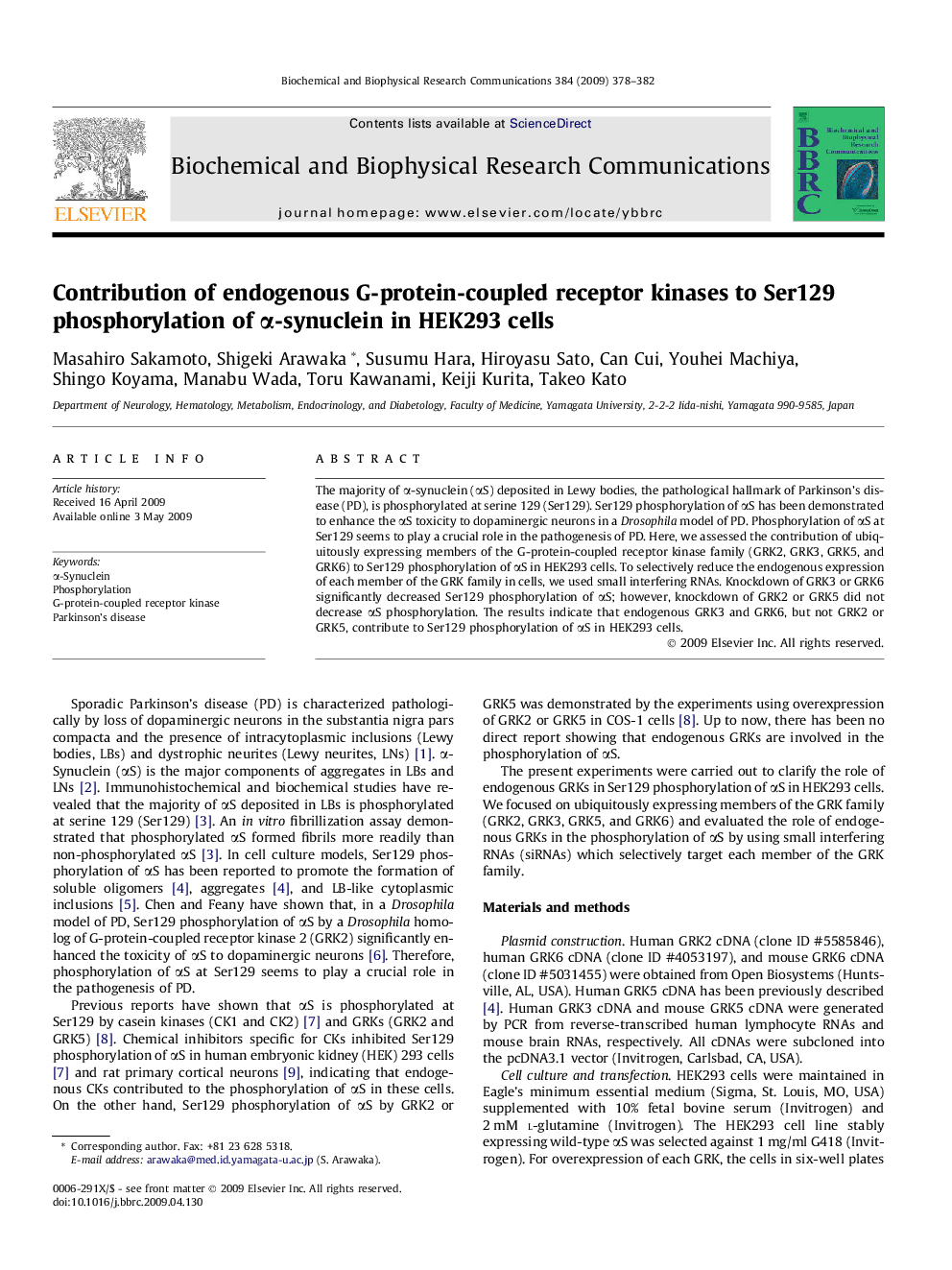| Article ID | Journal | Published Year | Pages | File Type |
|---|---|---|---|---|
| 1933605 | Biochemical and Biophysical Research Communications | 2009 | 5 Pages |
The majority of α-synuclein (αS) deposited in Lewy bodies, the pathological hallmark of Parkinson’s disease (PD), is phosphorylated at serine 129 (Ser129). Ser129 phosphorylation of αS has been demonstrated to enhance the αS toxicity to dopaminergic neurons in a Drosophila model of PD. Phosphorylation of αS at Ser129 seems to play a crucial role in the pathogenesis of PD. Here, we assessed the contribution of ubiquitously expressing members of the G-protein-coupled receptor kinase family (GRK2, GRK3, GRK5, and GRK6) to Ser129 phosphorylation of αS in HEK293 cells. To selectively reduce the endogenous expression of each member of the GRK family in cells, we used small interfering RNAs. Knockdown of GRK3 or GRK6 significantly decreased Ser129 phosphorylation of αS; however, knockdown of GRK2 or GRK5 did not decrease αS phosphorylation. The results indicate that endogenous GRK3 and GRK6, but not GRK2 or GRK5, contribute to Ser129 phosphorylation of αS in HEK293 cells.
